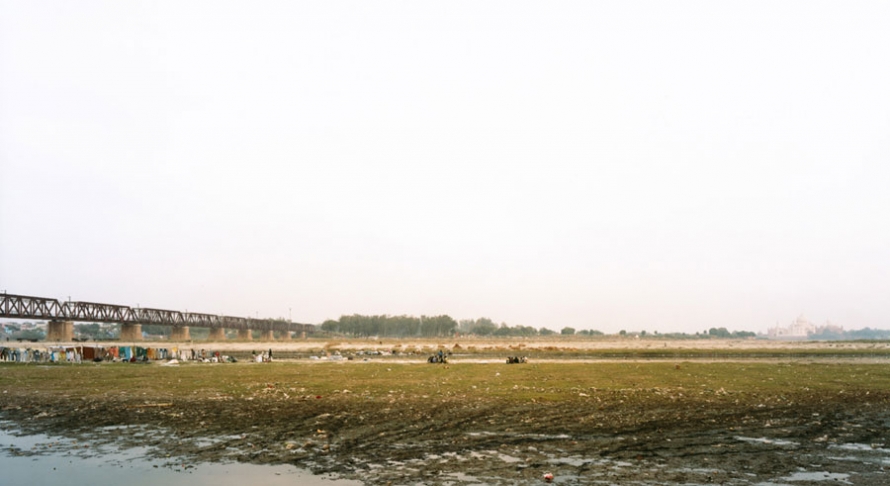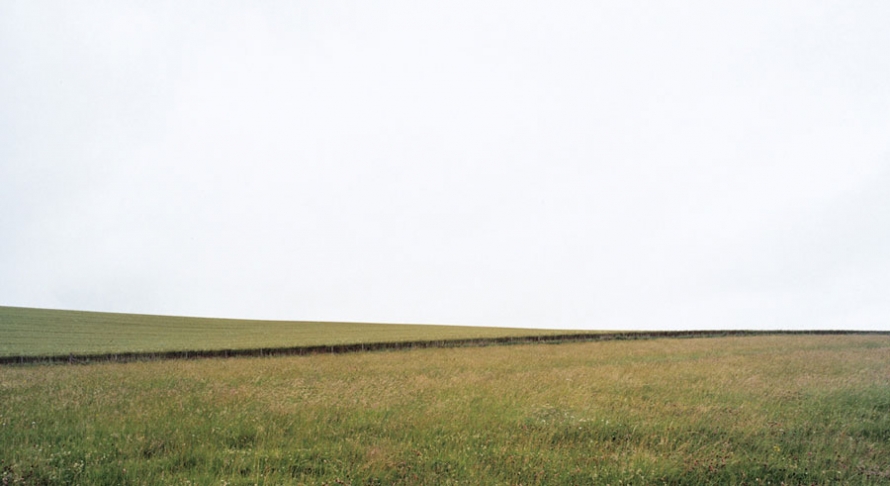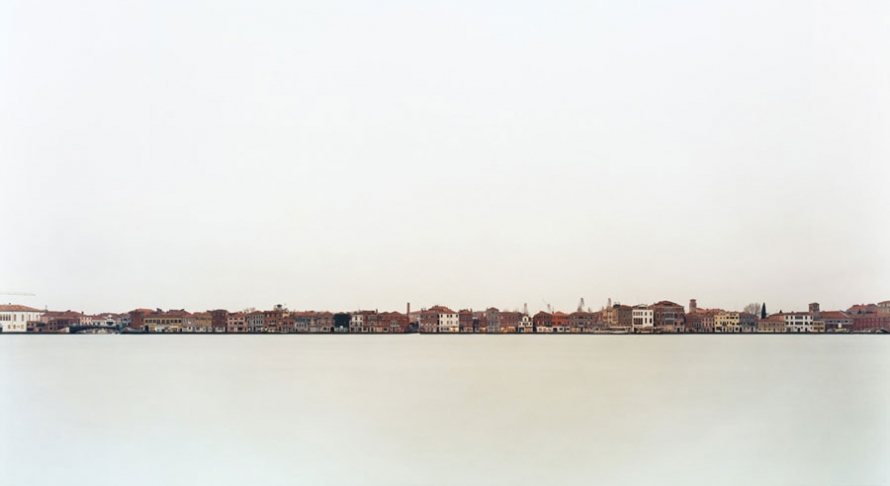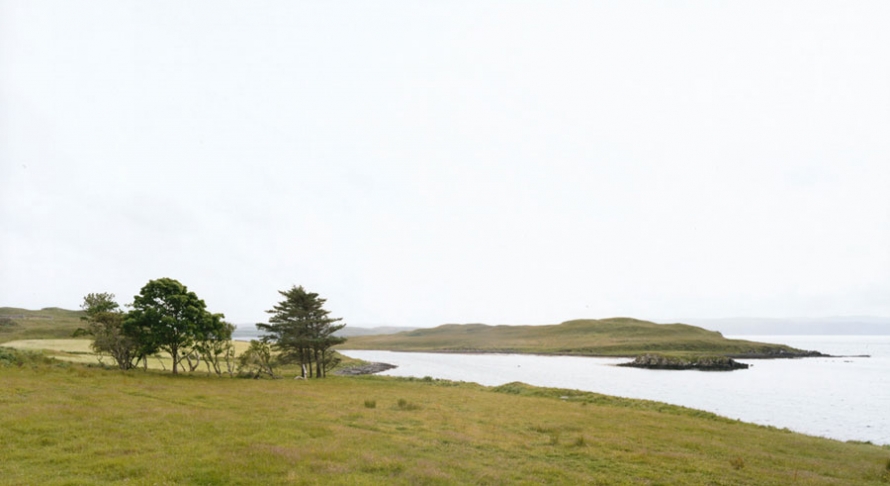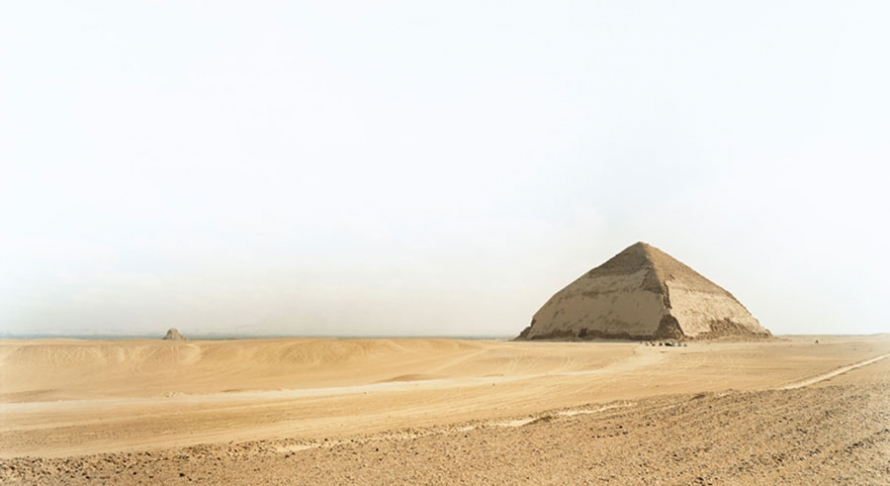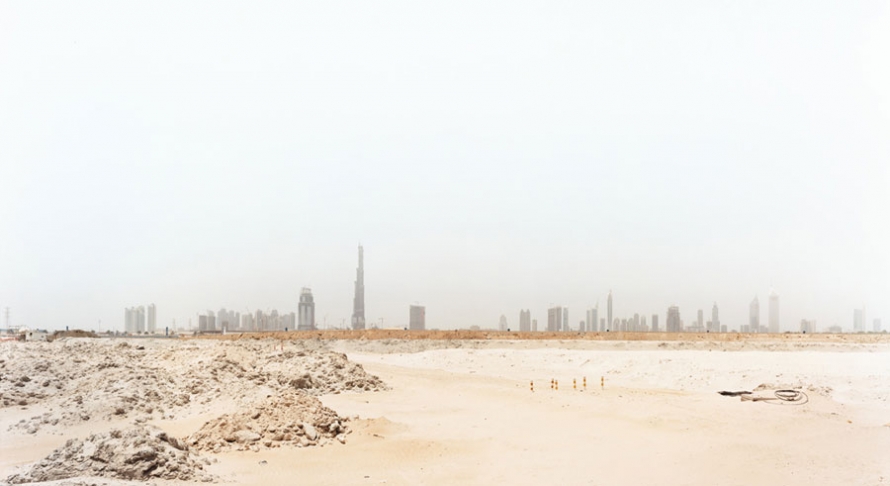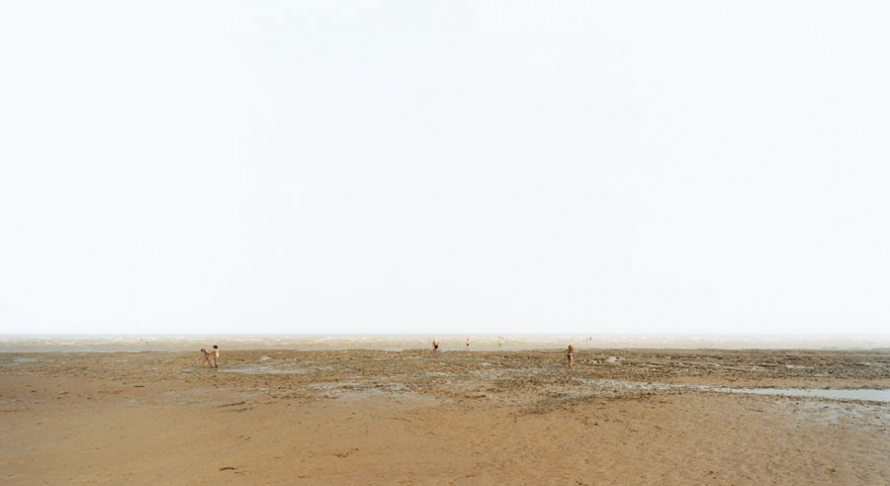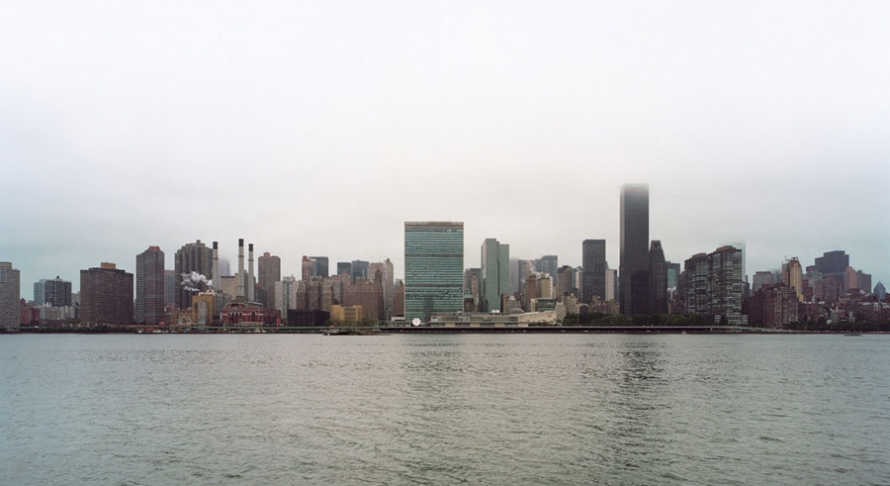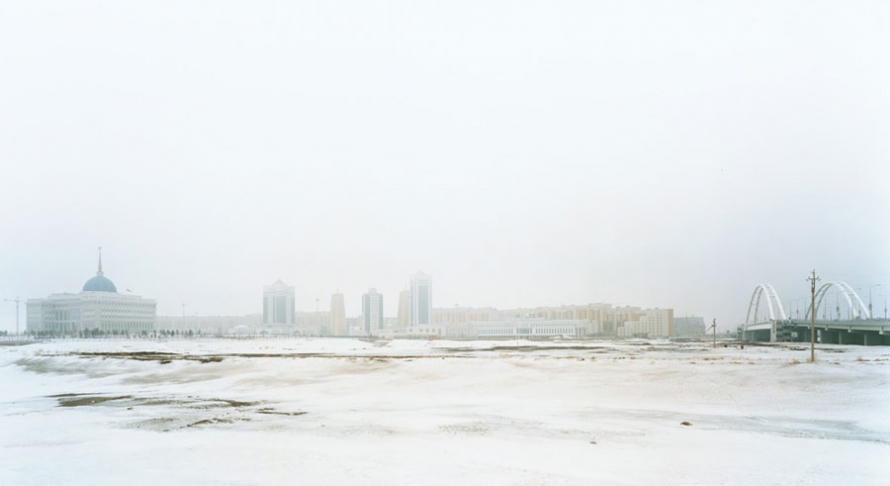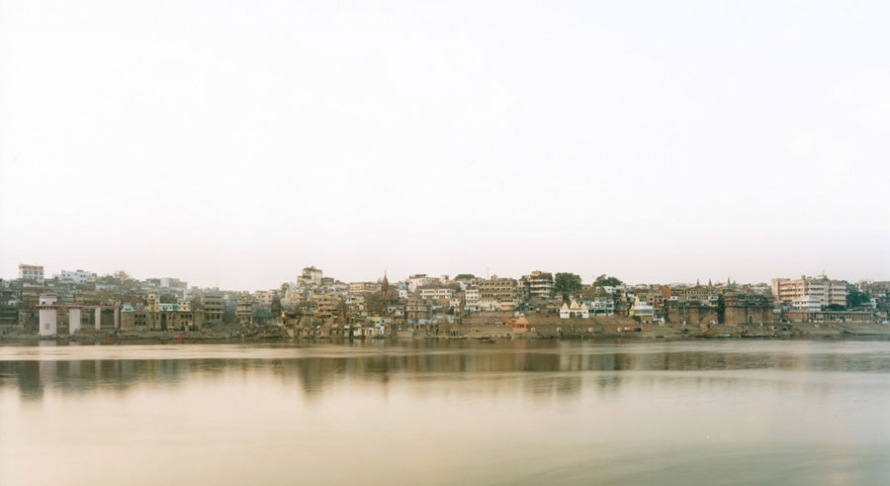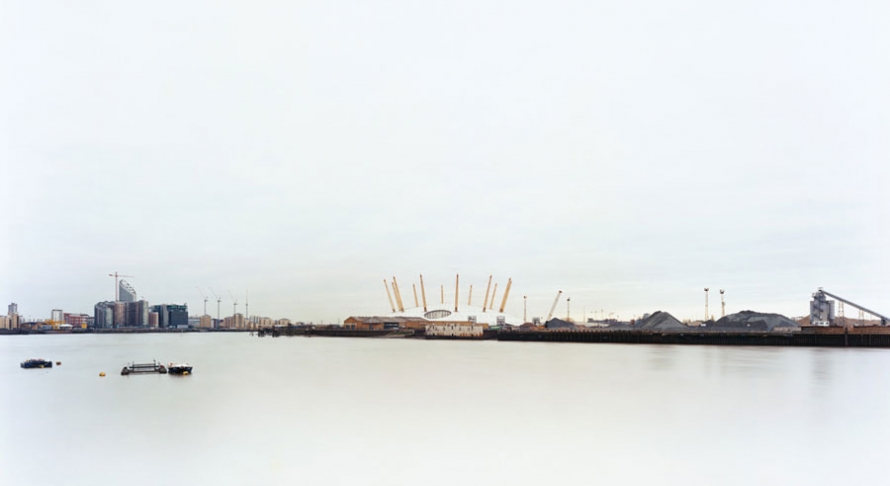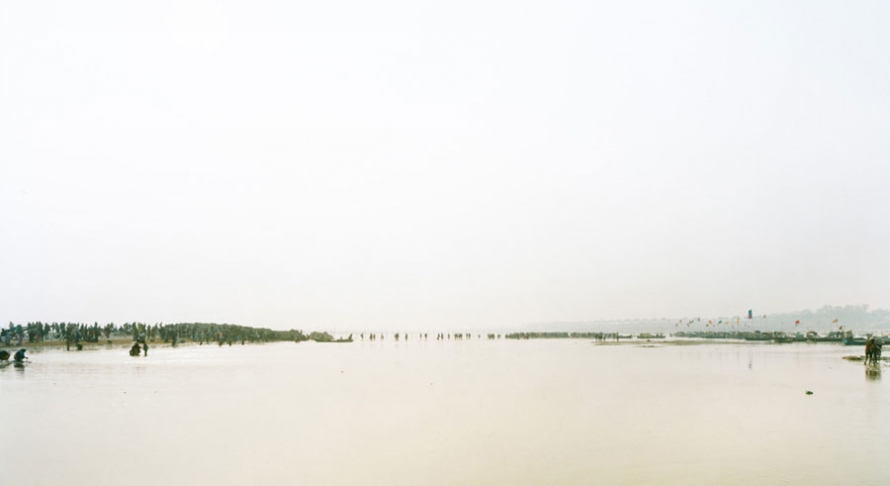Sze Tsung Leong must pay a fortune for location scouts. His work in the new “Horizons” exhibition at Yossi Milo Gallery in New York (April 3-May 17, 2008) shows the world’s edge in many cities, many rural vales, but always finds it a little shimmery and hard to pin down. Seen together, the pictures put the world on a flat line. It’s less Thomas Friedman, more a scale model of locations we can’t quite name. It’s all quite subtly mysterious. The following essay by Leong, excerpted from the show’s catalog, gets a little closer to exactly what he’s after.
All images © Sze Tsung Leong, Courtesy Yossi Milo Gallery, New York City.
Uncertain Distances
Sze Tsung Leong
The simplest manifestation of a horizon is a line separating ground from sky. From a visual standpoint, it forms the basis by which the earth’s surface is comprehended from an individual’s point of view. When drawn on a two-dimensional surface, it has been understood since the development of linear perspective six centuries or so ago, to create the reference plane upon which we can see the illusion of three-dimensional objects, sitting in relationship to each other in a unified space. The horizon also represents, and not just on a purely optical level, the farthest one can see, and marks the limit of the visible or knowable. It is the “fullest range or widest limit of perception, interest, appreciation, knowledge, or experience,” according to Webster’s Dictionary.
Understood with this expanded capacity, the horizon forms a boundary separating the inside from the outside, the seen from the unseen, the known from the unknown, and the familiar from the foreign. Any boundary automatically creates a relationship between what is included inside and what is left outside, making the outside just as important as the inside in knowing and understanding the inside itself. Intelligibility is just as much a question of establishing “this is not” as it is of determining “this is.” National borders are just as much about defining an idea of what we are not as they are about delineating what we are. A horizon is just as much about what we cannot see beyond it as it is about what we can see in front of it. In other words, the horizon always points to what is outside.
It is this relationship to the outside that gives the horizon an additional implication: that it establishes a sense of imminence, or of something just becoming apparent, as suggested by the phrase “on the horizon.” What is not yet seen or not yet known always surrounds and encroaches into the visible or known, and permeates thinking about and looking at our extended surroundings. The challenge that the unknown presents can drive the wish to solidify or reinforce borders, to build walls. But the interest and curiosity that the unknown also elicits can drive the wish to draw new maps, to roam unseen territories, to observe the seemingly empty regions of space. This drive is an impulse to approach the unknown, that is, to drift towards the horizon.
To drift toward the horizon implies approaching the outside, the unseen, the unknown, the foreign. Yet if the horizon is always the farthest visible point, the widest limit of knowledge, then any approach to the horizon will be accompanied and preceded by the range of familiarity that delineates the horizon in the first place. The familiar, to some degree or another, is always immanent in the foreign, acting as a form of navigation, a compass by which the outside can become understandable and legible.
This relationship between familiar and foreign guides the act of looking at anything just over the horizon of recognition. When faced with unknowns, thinking and seeing begin with associations and resemblances: “this reminds me of—,” “this looks like—” The distinctions between known and unknown overlap in efforts to establish markers for navigation, and thus the range of the known indicated by the horizon can drift. As a result, the distances separating near from far, familiar from foreign, inside from outside, iconic from quotidian, extraordinary from mundane, picturesque from unsettling, are never constant. Rather than by solid lines and divisions, they are characterized more by uncertain variable intervals, smooth continuous tones, and overlapping ambiguous translucencies.
The drifting horizon reveals the tendency for the arbitrariness of distinctions, the randomness of orders. Political borders, for example, rarely delineate essences—they are only the boundaries that overlap in the most dominant way, over dense layers of blurred zones and variable continuities. These dense layers, whether geological, historical, economic, social, or conceptual, are composed more by movements and fluctuations—continental drift, invasions and conquests, trade and distribution, migrations and dispersals, and exchanges and influences—than through segregation and ossification into discrete entities. Any way we divide up the world (Spanish, Indian, Mexican), will overlap with other orders (Hispanic, Caucasian, American), which in turn overlap with others (colonial, native, mestizo), which will inevitably obscure other, perhaps more interesting and unnamed orders. As a result, the boundaries of what we consider the local need not be limited to physically confined, specific places—the local can be mobile and dispersed.
The images that comprise this series could be of places familiar or foreign, of sites encountered or unknown, of locations recognized or uncertain. They could be readily named, or perhaps not identifiable at all. They could be encountered on an everyday basis, a short distance away, or on the other side of the globe. They could be taken for one place but actually be another. They could make the unknown comprehensible, or the known unfamiliar—what is just over the horizon does not necessarily have to be physically distant. They could be of places unheard of or perhaps just out of the reach of recognition. Could it be Mexico City? Lisbon? Delhi? Macau? In looking, we begin a process of traveling in order to place ourselves. The images could make one think, “this place looks like—,” “this place reminds me of—,” “isn’t this—?” Perhaps where these images are, exactly, is not so relevant. Their adjacencies could form relationships and connections that transcend existing borders, proximities, distances.
These images were not made as documents holding any set truths. They are meant only as suggestions. They are not necessarily images of moments, events, or objects. They are incomplete fragments of the globe. Their order can be rearranged—they are not without a degree of arbitrariness. They are emptied, to whatever degree is possible or impossible, of specific meanings, sometimes as physically empty as possible. They are attempts to depict space on the surface of the photograph, spaces into which viewers can project their own horizons.
